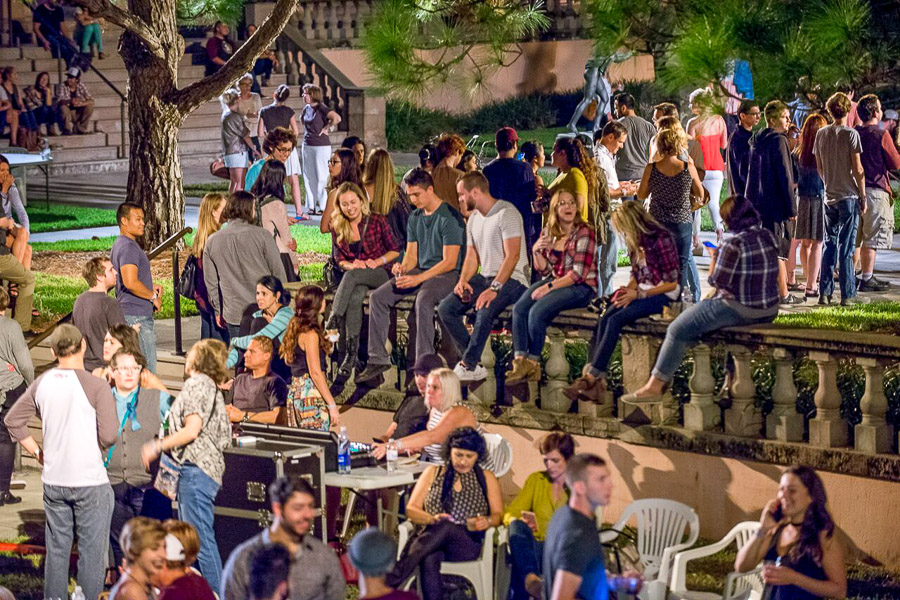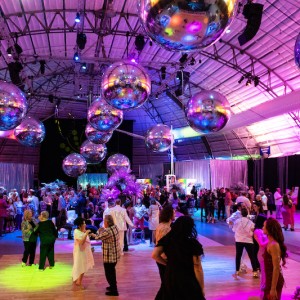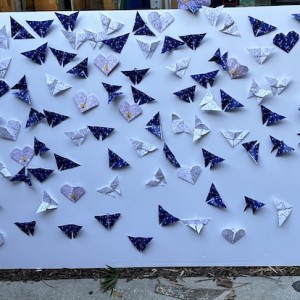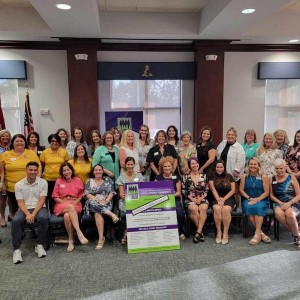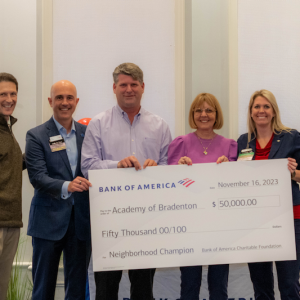The Millennial generation, which has grown to roughly 20 percent of the total population in both Manatee and Sarasota counties, is becoming increasingly engaged by nonprofit organizations—and for good reason. The impact potential that accompanies such a significant slice of the local population has not gone under the radar for many local nonprofits looking to bring about positive progression within their communities. Several organizers look to make significant strides in ripening Millennial engagement by putting them at the helm of community events and breaking down social barriers to make the events inviting, relatable and fun.
Connection is key, according to Alice Murphy, public relations manager at the Ringling Museum of Art, who feels the message resonates with the Millennial generation more when they see a post on social media from a friend or co-worker rather than from the organization running the event. Murphy believes traditional advertising to be overbearing, while social media poses a more personal dynamic. By closing the distance between company and friend, people are more liable to take part, “wanting to be a part of the fun,” she says. Sarah Valdez, recently appointed exhibitions and marketing director at the Art Center Sarasota, takes the idea one step further, leaving the shape of the center’s digital campaigns to these web-savvy up-and-comers. By providing the tools, Art Center hands the reins to the Millennials themselves. A sizeable turnout along with positive feedback from exhibits using this model (such as the recent #postdigital show), has given Valdez a sense of the potential moving forward, with exhibits of a similar nature looming on the horizon. “Instead of us putting this content out on social media platforms,” explains Valdez, “we look at it as: ‘How can our event and experience at Art Center drive the spectator to put that content out for us?’ Because they are the ones that have the important perspective.” Even the Harvey Milk Festival, already a draw for young folks as a music and arts festival providing a stage for marginalized voices in the LGBTQ+ community, recognizes the need for continued engagement and the utility of social media in spreading the message among the more digital crowd. “Social media is definitely a game changer,” says Harvey Milk Festival Founder Shannon Fortner, who still sees untapped potential in the decades-old technology. “But a lot of organizations are not making it a priority.”
Local nonprofits trek on by taking full advantage of the spark of social media, diving deeper into the Millennial-based community to utilize this immense talent pool by granting creative freedom to those involved. Fortner, for example, meets with several student committees on Ringling College of Art and Design and New College campuses, discussing how to strengthen communication with and engagement among their peers. Fortner recruits a Ringling College illustrator every year, tasked with producing all the marketing posters for the Harvey Milk Festival, and, for those who are serious about getting involved, two internships and two scholarships provided by the festival deliver additional incentive. Catherine Ferrer, community engagement coordinator for Realize Bradenton, a not-for-profit organization aimed at creating a more prosperous Bradenton area, places Millennials directly at the forefront of Realize Bradenton campaigns. Her overarching philosophy: make Millennials feel a part of the campaign and create the sense of being fully invested.
For the recent effort Cook Together Bradenton, Realize Bradenton’s entry in the 2016 Giving Challenge, Millennials Annie Breitinger and Mimi Tran (past and current board members respectively) co-chaired the campaign. With some help from the Realize staff, Breitinger and Tran took on every aspect involved with constructing the event, from finding a host restaurant to reaching out for personal “cook together” experiences. With the success of this pilot campaign, Ferrer believes even more in the impact of engaging Millennials; “When you are intentional, targeted and thoughtful about the way you create an event,” she says, “it can be easy to engage the generations you want to engage.”
Yet, efforts are for naught if the events aren’t fun and the Millennials don’t come back—lasting engagement is the goal. In the fall of 2012, the Ringling Museum of Art introduced Ringling Underground, a series of Millennial-focused nighttime events aimed at increasing Millennial visitorship to the museum as a whole. Transforming the museum courtyard into a mini-festival with live music and art, the events proved successful in terms of attracting late-night revelers, but the real trick remained: making these Millennials come back the next morning to become regular patrons of the museum itself. “We always leave one gallery open that evening during the events,” says Murphy, attempting to create a sense of yearning to see the delights contained in the galleries only open during normal hours. Similarly, Realize Bradenton’s Pop Ups for a Purpose initiative, an event series focused on temporarily transforming underutilized outdoor locations into communal gathering spaces for events and dialogue, is designed for Millennials in hopes of creating lasting engagement within the community. Events such as Plaza Cubana and Books, Bots and Bites focus on creating engagement within underserved Millennial demographics, like Hispanics and young parents respectively, “activating” these communal spaces and making the guests want to come back. Ferrer says, “Getting Millennials active in the community and focused on what they care about is what we find important.”





